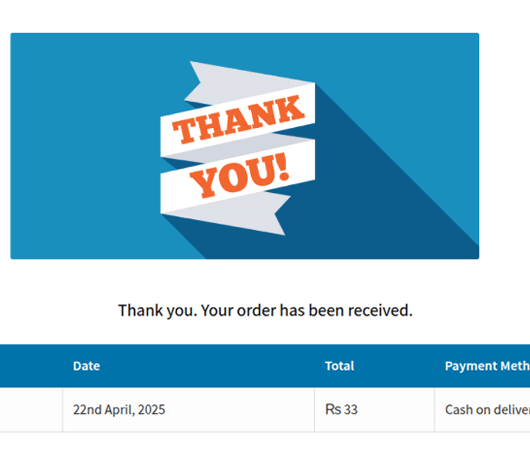Introduction to eCommerce payment gateways
In today’s digital era, eCommerce has become an integral part of the business landscape. As more and more businesses venture into the online realm, it is crucial to have a seamless and secure payment system in place. This is where eCommerce payment gateways play a pivotal role. An eCommerce payment gateway acts as a bridge between your online store and the customer’s preferred payment method, ensuring a smooth transaction process.
Selecting the right payment gateway for your eCommerce business is paramount to its success. A poorly chosen payment gateway can lead to frustrated customers, lost sales, and even security breaches. On the other hand, a well-designed and reliable payment gateway can enhance the overall user experience, increase conversion rates, and build customer trust.
Factors to consider when selecting an eCommerce payment gateway
When choosing an eCommerce payment gateway, there are several factors to consider. Firstly, compatibility with your eCommerce platform is essential. Make sure the payment gateway integrates seamlessly with your chosen platform, whether it’s Shopify, WooCommerce, or Magento. Additionally, consider the payment methods supported by the gateway. It’s crucial to provide your customers with a wide range of payment options, such as credit cards, digital wallets, and bank transfers.
Another factor to consider is the security measures offered by the payment gateway. Look for features like encryption, tokenization, and fraud prevention tools to safeguard your customers’ sensitive information. Additionally, consider the reputation and reliability of the payment gateway provider. Look for established providers with a track record of secure and reliable transactions.
Popular eCommerce payment gateways in the market
There are several popular eCommerce payment gateways available in the market today. Let’s take a closer look at some of the leading options:
- PayPal also provides a user-friendly interface and integrates seamlessly with popular eCommerce platforms.
- Stripe: Stripe is known for its developer-friendly interface and extensive customization options. It supports a wide range of payment methods and offers advanced features like subscription billing and mobile payments.
- Net: Authorize.Net is a popular choice for businesses of all sizes. It offers a comprehensive suite of payment solutions, including recurring billing, fraud prevention tools, and virtual terminals for manual payments.
- Square: Square is an all-in-one payment gateway that combines payment processing, point-of-sale systems, and business management tools. It is particularly popular among small businesses and offers a user-friendly interface and competitive fees.
Features and benefits of different payment gateways
Each eCommerce payment gateway comes with its own set of features and benefits. Understanding these can help you make an informed decision for your business. Here are some key features to consider:
- User Interface: Look for a payment gateway with an intuitive and user-friendly interface. This will make it easier for your customers to complete their transactions.
- Payment Methods: Ensure that the payment gateway supports a wide range of payment methods, including credit cards, digital wallets, and alternative payment options. This will cater to the diverse needs of your customers.
- Security: Opt for a payment gateway that prioritizes security. Features such as encryption, tokenization, and fraud prevention tools can protect your customers’ data and reduce the risk of fraud.
- This will streamline your operations and save you time and effort.
- Reporting and Analytics: Look for a payment gateway that provides comprehensive reporting and analytics. This will help you track sales, identify trends, and make data-driven decisions for your business.
Comparison of fees and transaction costs
When selecting an eCommerce payment gateway, it’s essential to consider the fees and transaction costs associated with each option. These costs can vary significantly between payment gateways and can impact your bottom line. Here are some factors to consider when comparing fees:
- Consider whether this fee is reasonable and aligns with your budget.
- Transaction Fees: Most payment gateways charge a per-transaction fee, usually a percentage of the total transaction amount. Compare these fees to find the most cost-effective option for your business.
- Monthly Fees: Some payment gateways charge a monthly fee for access to their services. Consider whether this fee is justified based on the features and benefits provided.
- Additional Fees: Be aware of any additional fees, such as chargeback fees or international transaction fees. These can add up and impact your profitability.
It’s important to strike a balance between cost and value when choosing an eCommerce payment gateway. While cheaper options may seem appealing, consider the overall features, reliability, and customer support provided by each gateway.
Integration options with popular eCommerce platforms
To streamline your operations and ensure a seamless checkout experience for your customers, it’s crucial to choose an eCommerce payment gateway that integrates well with your chosen platform. Here are some integration options with popular eCommerce platforms:
- Shopify: Shopify offers a wide range of payment gateway options, including its native solution, Shopify Payments. It also integrates with popular gateways like PayPal, Stripe, and Authorize.Net.
- WooCommerce: WooCommerce, a popular WordPress plugin, offers integration with various payment gateways, such as PayPal, Stripe, and Square. It also provides additional extensions for more specific payment methods.
- Magento: Magento, a robust eCommerce platform, supports numerous payment gateways, including PayPal, Stripe, Braintree, and Authorize.Net. It offers flexible integration options to cater to different business needs.
Whichever platform you choose for your eCommerce business, ensure that the payment gateway integrates seamlessly and supports the payment methods your customers prefer.
Security measures and fraud prevention
As an eCommerce business owner, the security of your customers’ sensitive information should be a top priority. When selecting an eCommerce payment gateway, consider the security measures and fraud prevention tools offered.
- Encryption: Ensure that the payment gateway uses industry-standard encryption protocols, such as SSL/TLS. This safeguards your customers’ data during transmission.
- This reduces the risk of data breaches and minimizes your liability.
- Fraud Prevention Tools: Look for payment gateways that offer robust fraud prevention tools, such as address verification systems (AVS) and card verification codes (CVC).
- PCI Compliance: Payment Card Industry Data Security Standard (PCI DSS) compliance is essential to ensure the secure handling of credit card information. Choose a payment gateway that is PCI compliant to mitigate security risks.
By choosing a payment gateway with strong security measures, you can protect your customers’ data and build trust in your brand.
Customer support and ease of use
When it comes to eCommerce payment gateways, customer support and ease of use are crucial considerations. Look for a payment gateway provider that offers reliable customer support channels, such as phone, email, or live chat. Prompt and knowledgeable support can save you time and frustration when dealing with any issues or queries.
Additionally, consider the ease of use of the payment gateway’s interface. A user-friendly interface will make it easier for you to manage transactions, generate reports, and navigate through the platform. It will also contribute to a seamless checkout experience for your customers.
Case studies of businesses that have successfully implemented payment gateways
To gain a deeper understanding of how payment gateways can benefit your eCommerce business, let’s explore some case studies of businesses that have successfully implemented them:
- Case Study 1: ABC Clothing – ABC Clothing, an online retail store, implemented Stripe as their payment gateway. With Stripe’s seamless integration with their eCommerce platform, ABC Clothing was able to offer a wide range of payment options to their customers. This resulted in increased conversion rates and customer satisfaction.
- Case Study 2: XYZ Electronics – XYZ Electronics, an electronics retailer, chose PayPal as their payment gateway. PayPal’s reputation for security and its user-friendly interface aligned with XYZ Electronics’ brand values. By offering PayPal as a payment option, XYZ Electronics saw a significant reduction in cart abandonment rates.
These case studies highlight the positive impact that a well-chosen payment gateway can have on an eCommerce business. By selecting a payment gateway that aligns with your business goals and customer preferences, you can enhance the overall user experience and drive growth.
Steps to integrate a payment gateway into your eCommerce website
Integrating a payment gateway into your eCommerce website may seem like a daunting task, but with the right approach, it can be a seamless process.
- Compare features, fees, and integration options to make an informed decision.
- Sign Up: Once you’ve chosen a payment gateway, sign up for an account. Provide the necessary documentation and complete the registration process.
- Configure Settings: Configure the settings of your payment gateway account. This includes specifying your business information, setting up payment methods, and enabling security features.
- Integrate with eCommerce Platform: Follow the integration instructions provided by your eCommerce platform. This may involve installing a plugin or adding code snippets to your website.
- Test Transactions: Before going live, conduct test transactions to ensure that the payment gateway is functioning correctly. This will help you identify and resolve any issues before your customers encounter them.
- Go Live: Once you’re confident in the integration and testing, make your payment gateway live. Communicate the availability of new payment options to your customers and monitor the transaction process closely.
By following these steps and seeking assistance from the payment gateway provider or your eCommerce platform’s support team, you can seamlessly integrate a payment gateway into your eCommerce website.
Tips for optimizing the checkout process for a seamless customer experience
The checkout process is a critical stage in the customer journey, and optimizing it can lead to higher conversion rates and customer satisfaction. Here are some tips for optimizing the checkout process:
- Simplify the Form: Minimize the number of fields in your checkout form to reduce friction. Only ask for essential information and provide autofill options whenever possible.
- Guest Checkout Option: Offer a guest checkout option to eliminate the need for customers to create an account. This reduces barriers to purchase and speeds up the checkout process.
- This helps customers understand where they are in the process and how much more they need to complete.
- Mobile Optimization: Ensure that your checkout process is fully optimized for mobile devices. Mobile-friendly designs and streamlined interfaces will make it easier for customers to complete their purchases on-the-go.
- One-Page Checkout: Consider implementing a one-page checkout if feasible. This allows customers to view and complete all necessary information on a single page, reducing the chances of abandonment.
- Transparent Pricing: Clearly display the total cost, including taxes, shipping fees, and any additional charges, before customers reach the payment stage. This transparency builds trust and reduces surprises.
By implementing these optimization tips, you can create a seamless and user-friendly checkout experience that encourages customers to complete their purchases.
Best practices for ensuring secure online transactions
Security is of paramount importance when it comes to online transactions. To ensure secure online transactions for your customers, follow these best practices:
- Use SSL/TLS Encryption: Secure Socket Layer (SSL) or Transport Layer Security (TLS) encryption is crucial for protecting sensitive information during transmission. Ensure that your website has a valid SSL/TLS certificate and that all transactions occur over HTTPS.
- Keep Software Updated: Regularly update your eCommerce platform, plugins, and payment gateway integrations to the latest versions. This ensures that you have the latest security patches and fixes any known vulnerabilities.
- Implement Two-Factor Authentication: Enable two-factor authentication for your payment gateway account and any other administrative accounts related to your eCommerce website.
- Monitor for Suspicious Activity: Regularly monitor your website and payment gateway for any signs of suspicious activity. This includes reviewing transaction logs, monitoring for unusual patterns, and promptly investigating any reported issues.
- Educate Customers: Educate your customers on the importance of strong passwords and safe online practices. Remind them to avoid using public Wi-Fi networks for sensitive transactions and to be cautious of phishing attempts.
- Comply with PCI DSS: Ensure that your eCommerce website and payment gateway are compliant with the Payment Card Industry Data Security Standard (PCI DSS). This standard outlines security requirements for handling credit card information and helps protect against data breaches.
By implementing these best practices, you can create a secure environment for your customers and mitigate the risk of fraud or data breaches.
Conclusion
Choosing the right eCommerce payment gateway is a crucial decision for your business. It impacts not only the checkout experience for your customers but also the security and reliability of your transactions. By considering factors such as compatibility, security measures, fees, and integration options, you can make an informed decision that aligns with your business goals.
Remember to optimize the checkout process for a seamless customer experience and follow best practices to ensure secure online transactions. By implementing these strategies, you can build customer trust, increase conversion rates, and drive the success of your eCommerce business.
CTA:
Now that you have a comprehensive understanding of eCommerce payment gateways, take the next step and evaluate your business needs. Research the available options, compare their features and fees, and choose the payment gateway that best suits your requirements. Remember, the right payment gateway can be a game-changer for your business, so choose wisely and watch your online sales soar.











